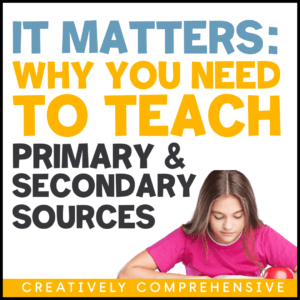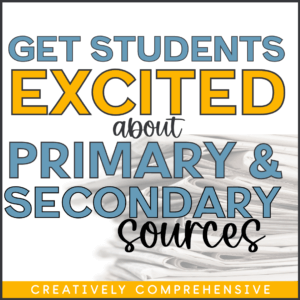Digital Resources Open Up a World of Learning
It’s essential that students understand how to conduct research using primary sources. However, the prospect of opening up dusty old books will probably not appeal to anyone living on our digital-everything planet. Fortunately, many research sites provide interactive elements that will engage even the most tuned-out learners. Here’s your guide to the best sites for finding authentic primary sources and trusted secondary sources online!

Let’s take something off your plate! My Researching with Primary and Secondary Sources project has everything you need to teach this concept to your students!
Do you have students who think research means to type the topic into the Google search bar and then copy everything on the page…including the website addresses? A common misconception is that kids these days know how to use technology to do everything, but the truth is their knowledge often extends only to games and social media sites. However, the internet can be a valuable research tool- once you teach your students where to look!
Let’s go over a few amazing resources students can access to find primary sources.
(Warning: don’t forget that primary also means “unedited.” While your goal may be for students to learn how to conduct research on their own, you will definitely want to review these websites beforehand and develop guidelines for student searches).
Libraries
Libraries are invaluable resources when it comes to researching primary sources. Start by checking out your local library system and see what research tools/databases they subscribe too. You will probably be amazed at what you can access for free just by using your library card!
Don’t forget about resources like the Digital Public Library of America. You might even find amazing content for social studies lessons there!
New to using primary sources? The Library of Congress has a great page devoted to using primary sources in your classroom.
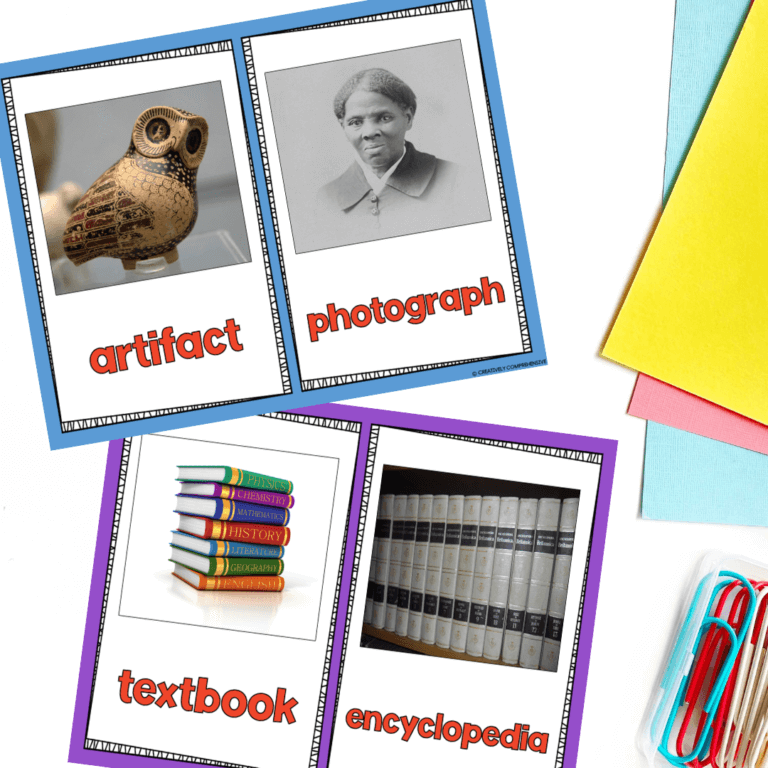
Do you have a lot of visual learners? Grab this free set of posters featuring real examples of the most commonly used primary and secondary sources.
Museums - Where Primary Sources Come to Life
Museum websites are also a terrific way to view primary source material. Many museums have interactive virtual tours of their collections and exhibits. It’s like taking a field trip without any of the hassle!
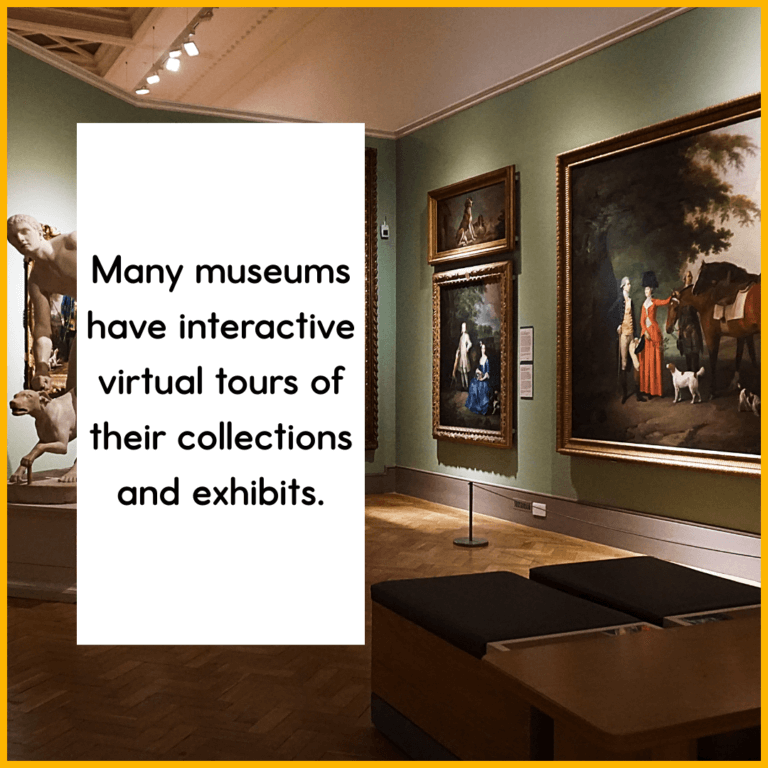
A quick word of warning: don’t forget that primary sources can sometimes lead to, ahem, uncensored content, particularly when looking at art. You might wish to conduct your own research first before letting your students check out a museum exhibit!
Here are a few museums that have terrific online resources:
American Museum of Natural History
Newspapers
If you want your students to understand the impact of historical events, one of the best places to turn is to newspaper articles published at the time of the event. Luckily, many newspapers house their archives online. Your library may even have a subscription to view their content!
Here are a few newspaper websites to explore:
Putting it All Together
Taking advantage of digital resources can help you create engaging, immersive lessons around primary and secondary sources. Use some of the ideas above to help your students find primary sources that tie into what they are learning, and pair that with quality secondary source information to help them become research experts! Embrace the technology available and watch your students thrive as they explore and connect with the past in new, exciting ways.
Researching with Primary Sources: A Done-For-You Project
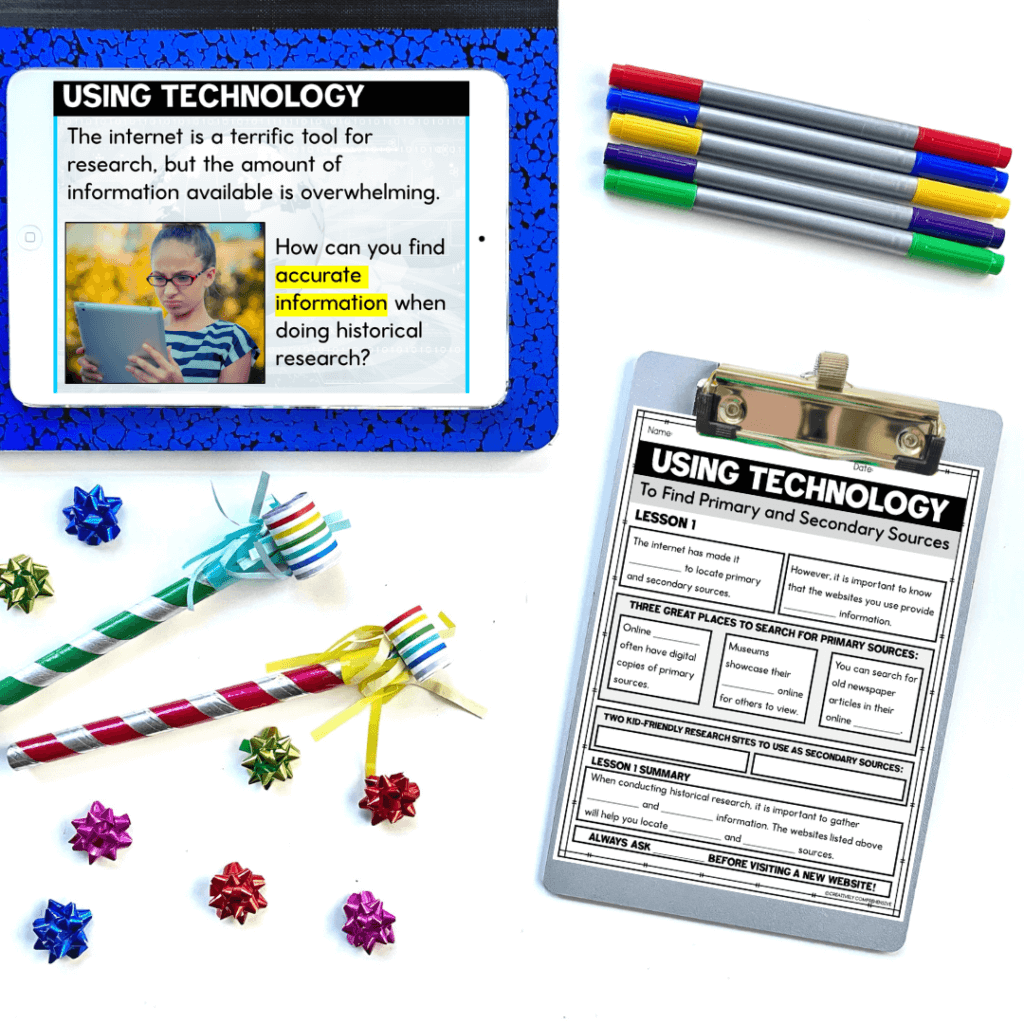
Terrified at the thought of handing research over to your upper elementary students? Let me help!
This quick research project walks students through HOW to find appropriate and relevant primary and secondary source material online, then has them put their knowledge to use by conducting some simple research on a historical figure. You can see more on TPT or check it out in my resource store right here on the website:


